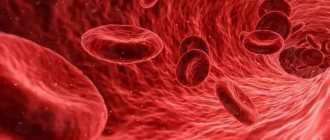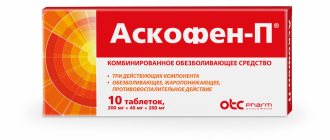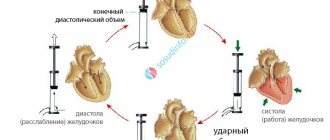The main types of blood thinning drugs
Blood thinners are produced in a huge variety of different forms. But the most convenient are tablets. But at the same time, it is necessary to know not only which tablets thin the blood, but also to understand the principle of their effect. Blood thinners are classified into two main groups:
- Anticoagulants. They improve the rheological properties of blood due to the fact that they affect the process of fibrin formation. This protein forms the basis of the blood clot. When taking the drug. In addition, anticoagulants reduce the risks of stroke and heart attack.
- Antiplatelet agents. These agents do not allow platelets to stick together, which prevents the formation of clots in the bloodstream. This helps reduce the thickness of the blood. The drugs are indicated for
- thrombophlebitis and thrombosis.
When else should you not take aspirin?
- With high blood pressure.
Because taking it may increase the risk of hemorrhagic stroke in this case. If you have hypertension, you should take aspirin only when your blood pressure is adequately controlled.
- If you suspect a stroke.
If we are dealing with a suspected stroke (a person suddenly developed severe weakness in an arm or leg, speech, motor disturbances, the corner of the mouth is drooping, he cannot smile, etc.), in no case should aspirin be given in this situation. There are no objective signs that allow one to clearly differentiate between hemorrhagic (associated with cerebral hemorrhage) and ischemic (associated with blockage of a cerebral artery by an atherosclerotic plaque) type of stroke. And if the stroke is hemorrhagic, and we give such a person aspirin, then it’s scary to imagine how it could end...
All you need to do if you suspect a person is having a stroke is to lay him in a horizontal position, try to calm him down and call an ambulance as soon as possible.
Common anticoagulants
There are 2 groups of anticoagulants of direct and indirect action. The first group is characterized by the fact that after application they get quick results. Blood-thinning drugs of the second group of drugs belong to vitamin K antagonists and have a long-term effect.
The most common direct-acting anticoagulant is heparin. The drug is produced in two forms:
- In the form of a solution for injection and infusion.
- In the form of a gel for external use.
Therapeutic and prophylactic agents are indirect-acting anticoagulants. These are tablets that thin the blood and prevent blood clots by reducing the effect of fat-soluble vitamin K on blood clotting.
The most well-known indirect anticoagulant is warfarin. This drug is available under different names. It is highly effective, but has serious contraindications, so it is available only with a prescription.
When taking direct anticoagulants, mandatory monitoring of blood clotting parameters (INR) is required. This allows you to evaluate the effectiveness of therapy and reduce the risks of complications with blood thinning. Based on the data obtained, the dosage of the medication is adjusted if necessary.
Why are oral anticoagulants needed?
Anticoagulants are medications that reduce the activity of the blood clotting system and prevent excessive blood clots. Modern anticoagulants affect various parts of the blood coagulation process and are used for the prevention and treatment of arterial or venous thrombosis and thromboembolism.
Classification of anticoagulants
All anticoagulant drugs are divided into two large groups:
- direct anticoagulants (drugs prescribed by injection) that inhibit thrombin activity - direct anticoagulants;
- indirect anticoagulants, or oral anticoagulants (prescribed in tablet form), which interfere with the formation of prothrombin in the liver. They are also called vitamin K antagonists, or indirect anticoagulants.
Indirect anticoagulants
Vitamin K is a vitamin of natural origin, found mainly in green leafy vegetables (spinach, broccoli, lettuce) and enters the body with food. In addition, vitamin K is synthesized by bacteria in the intestines. The body uses vitamin K to make a number of proteins in the liver that are involved in blood clotting. Daily requirement of vitamin K: 0.03-1.5 mcg/kg/day (up to 105 mcg/day).
Table 1. Vitamin K content in foods (µg/100 g of product)
| Products | Vitamin K content |
| Green tea, leaves | 964 |
| Lettuce, green leaves | 850 |
| Chard, leaves raw | 830 |
| Cabbage leaf | 817 |
| Cabbage, raw | 487 |
| Brussels sprouts | 434 |
| Spinach, leaves raw | 383 |
| Spinach, fresh/frozen leaves, cooked | 360 |
| Black tea, leaves | 42 |
| Brussels sprouts, fresh, frozen | 289 |
| Raw chicory | 231 |
| Red leaf salad | 210 |
| Broccoli raw | 205 |
| Soybean oil | 193 |
| Broccoli, fresh/frozen, cooked | 192 |
| Green onions | 190 |
| Beans | 140 |
| Iceberg lettuce | 123 |
Oral anticoagulants, interfering with this process, significantly increase blood clotting time. However, oral anticoagulants do not thin the blood or dissolve existing blood clots, although they can stop existing clots from growing.
Normally, natural blood anticoagulants ensure that blood clotting occurs only when the integrity of the blood vessels is disrupted. However, in certain clinical conditions called thrombotic disorders, this same mechanism can lead to the unwanted formation of life-threatening blood clots called thrombi. In such situations, the action of anticoagulants helps prevent excessive thrombus formation.
If you have a blood clot or are at risk of developing blood clots, your doctor may prescribe anticoagulants (such as warfarin) to prevent blood clots as part of your treatment.
Classification of indirect anticoagulants
All indirect anticoagulants are divided into three main groups:
- monocoumarins – warfarin, marcoumar, sincumar;
- dicoumarins – dicoumarin, tromexane;
- indanediones – phenyline, dipaxin, omefin.
The most common indirect anticoagulant is warfarin, which is associated with the predictability of its action and stable anticoagulation rates.
Indications for the use of oral anticoagulants
The following main reasons for the use of oral anticoagulants can be identified:
- atrial fibrillation: a disturbance of the heart rhythm in the form of erratic contraction of the atria, which can lead to the formation of clots on their walls;
- mechanical heart valves: surgical replacement of damaged heart valves with their mechanical counterparts. In this case, the body reacts to the “foreign” mechanical valve and starts an unwanted blood clotting process.
1. Koertke H. et al INR Self-Management Following Mechanical Heart Valve Replacement Journal of Thrombosis and Thrombolysis, 2001;
9, 41-45. Approximately 75% of complications after valve replacement surgery are due to bleeding and thromboembolism, which can occur within the first year after surgery.
In patients with a mechanical mitral valve prosthesis, massive thromboembolism occurs at a rate of 4-12% per year. In patients with a mechanical prosthesis in the aortic position, this figure is higher.
2. Herijgers, P. et al Improving the quality of anticoagulant therapy in patients with mechanical heart valves: what are we waiting for? European Heart Journal 2007 28, 2424-2426.
Warfarin helps reduce these rates to about 1% and continues to be the most effective drug for most patients.
- Deep vein thrombosis: When blood circulation is slow, clots can form in the deep veins of the thigh or pelvic muscles.
- Pulmonary embolism: A clot that forms in the deep veins travels to the right side of the heart and travels through the pulmonary arteries to the lungs, where it blocks blood flow.
- Prevention of excessive blood clots due to genetic bleeding disorders.
- Stroke: A blood clot travels to the brain and causes sudden cessation of cerebral circulation.
- Myocardial infarction: Damage to the heart muscle from a myocardial infarction can cause blood clots to form in the ventricles of the heart.
3. Butchart EG Antithrombotic management in patients with prosthetic valves: a comparison of American and European Heart guidelines, 2009; 95: 430-436.
Aspirin Cardio or Warfarin?
Based on certain criteria (age and additional risk factors), the attending physician may prescribe patients with atrial fibrillation one of two options for antithrombotic drugs: antiplatelet drugs, such as aspirin (prevents platelets from sticking together) or anticoagulant drugs, such as warfarin (blocks clotting factors). blood):
- acetylsalicylic acid (aspirin) if the risk of stroke is low;
- warfarin, which is recommended for those at higher risk of stroke.
The pharmacological effect of aspirin as an anticoagulant is to inhibit the adhesion of platelets, the main component of a blood clot, thus acetylsalicylic acid prevents the development of thrombosis of blood vessels.
The indication for the use of aspirin for blood thinning is the presence of a transient cerebrovascular accident in the past - i.e. such a disorder in which neurological symptoms manifested themselves for no more than 24 hours.
Both drugs are taken in tablet form, but more careful monitoring of blood coagulation is required when taking warfarin. Therefore, today the typical solution for daily thrombosis prevention is long-term use of low-dose aspirin to thin the blood (Aspirin Cardio). But research suggests that warfarin is more effective in reducing the risk of stroke.
4. Hart RG et al. Meta-analysis: antithrombotic therapy to prevent stroke in patients who have nonvalvular atrial fibrillation. Ann Intern Med. 2007; 146 (12): 857-867.
In addition, the instructions for use of Aspirin Cardio for blood thinning separately indicate a significant list of contraindications. Also, any instructions for aspirin mention pronounced undesirable effects that develop with long-term use of aspirin to thin the blood, even in low dosages. With long-term use of acetylsalicylic acid, which is part of Aspirin Cardio, it is possible to develop erosions and ulcers of the gastrointestinal tract, thrombocytopenia (decreased platelet count), and increased levels of liver enzymes.
Aspirin tablets have no obvious advantages in terms of cost. The price of “aspirin for the heart” is quite comparable to the cost of treatment with warfarin. Even American aspirin for thinning the blood is far from a panacea.
Compared with no treatment, warfarin reduced the risk of stroke by 64%, which is almost three times more than taking the blood thinner aspirin (for more information, talk to your doctor, who can recommend the drug that's best for you) .
Figure 1. Warfarin and stroke risk
In some cases, indirect anticoagulant drugs need to be taken for several months, sometimes throughout life. The duration of the course is determined by the doctor.
Direct and indirect anticoagulants reduce blood clotting and therefore increase the risk of bleeding, so compliance with the dosage regimen is vital. Under no circumstances should you increase the dosage or shorten the interval for taking anticoagulants.
Monitoring the effectiveness of these drugs is also of paramount importance: a blood test called INR (international normalized ratio) helps determine the most optimal dosage of oral anticoagulants.
Popular antiplatelet agents
Drugs that belong to the group of antiplatelet agents prevent blood clots. The drugs prevent platelets and red blood cells from sticking together during the blood clotting stage, and also reduce their adhesion to the endothelium of blood vessels. This increases blood flow rates.
The most popular medications that are classified as blood-thinning drugs are those in which the active ingredient is acetylsalicylic acid. For diseases of the cardiovascular system, Aspirin Cardio is often prescribed. The tablets should be taken before eating with a sufficient amount of water. The medicine minimizes the risk of heart attacks in people over 50 years of age. The drug is also prescribed for many other pathologies of the cardiovascular system.
In cases where there are contraindications to acetylsalicylic acid, drugs with the active ingredient clopidogrel are prescribed. These are Aggregal, Lopirel, etc. The effect of medications of this type is reduced when combined with Omeprazole, as well as other medications aimed at eliminating heartburn and treating gastritis and peptic ulcers.
Antiplatelet agents and anticoagulants: what is the difference?
First of all, it must be emphasized that blood thickness and excessive blood clotting are different processes. And it’s precisely the latter that medications are designed to combat, which prevent the severe consequences of excessive coagulation, thrombus formation, and also prevent this very coagulation and thrombus formation, the therapist notes.
To solve this problem, there are two large groups of drugs: antiplatelet agents and anticoagulants. Here it is worth saying right away that for those people who are interested in drugs for “blood thinning”, for example, for the purpose of prophylactic use, only drugs from the first group, that is, antiplatelet agents, are suitable. A typical representative of this group is acetylsalicylic acid in low doses.
“I would especially like to highlight that it is extremely dangerous to use such a remedy for viral infections. Especially without consulting a specialist. Only a doctor can make a decision about discontinuing or replacing if you are taking medications based on such acid,” says Tatyana Romanenko. For example, in children with a viral disease, taking acetylsalicylic acid can lead to Reye's syndrome, which manifests itself as severe damage to the liver and brain.
But why are anticoagulants needed? “This group of drugs prevents the formation of blood clots, stops the growth of existing blood clots, and also enhances fibrinolysis, that is, they dissolve an already existing blood clot. Disaggregants cannot do this. Classic representatives of anticoagulants include heparin and warfarin. No one will take warfarin on their own, since it is prescribed to patients, for example, with artificial heart valves for therapeutic purposes,” says Tatyana Romanenko.
You are responsible for yourself. When self-medication is useful and safe Read more
Antiplatelet agents, the doctor notes, can be bought without a prescription as a preventive measure. To understand how certain drugs work and why they are prescribed, you need to know the physiology of the process of hematopoiesis and its flow through the vessels. The purpose of antiplatelet agents is to prevent platelet aggregation.
“The main job of platelets is to participate in stopping bleeding; they form the primary, white thrombus. They are also involved in the formation of the final, red, or fibrin thrombus. Platelets constantly circulate through vessels of any caliber - from the aorta to capillaries, and monitor the presence of damage to the vascular network. As long as there is no damage, platelets are not activated. As soon as a vessel injury occurs, platelets begin to show activity - they stick to the damaged wall and aggregate, or stick together. This is how a platelet plug, or primary white thrombus, is formed. Also, activated platelets begin to produce biologically active substances, a whole cascade of reactions occurs, more and more platelets are involved in the process, the vessel wall contracts, the blood coagulates, and the bleeding stops,” explains Romanenko.
But here, too, there may be conditions when aggregation does not disrupt the integrity of the vessel walls. The same white blood clots appear, but atherosclerotic vascular damage does not increase. When even a small piece is torn off, platelets can be “deceived” and begin to become active near the atherosclerotic thrombus or the site of its detachment. Accordingly, antiplatelet agents should prevent platelets from sticking to each other, as well as their adhesion to blood vessels.
The general indications for prescribing antiplatelet agents are prevention. “They are prescribed as a means of preventing postoperative thrombosis, for various thrombophlebitis due to varicose veins, for chronic cerebral ischemia and atherosclerosis. But, of course, their main task is to prevent vascular accidents, that is, heart attack, stroke due to coronary heart disease and atherosclerotic lesions of the carotid arteries,” says Tatyana Romanenko.
Question answer
Will we face a shortage of imported medicines?










